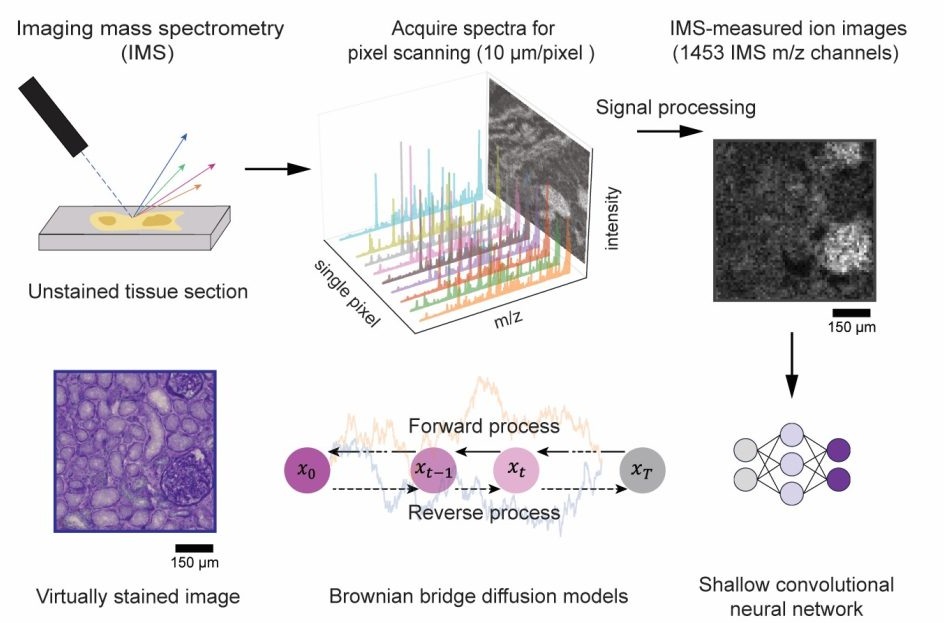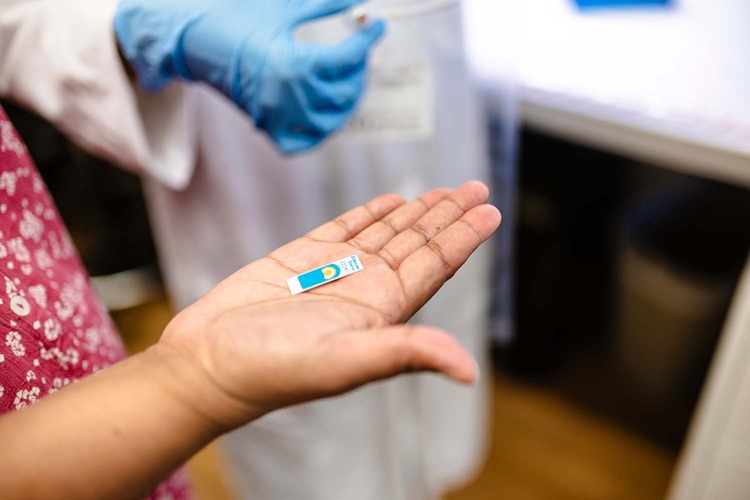Deep Learning Advances Imaging Mass Spectrometry with Virtual Histological Detail
Posted on 06 Aug 2025
Imaging mass spectrometry (IMS) is a powerful technique that can map thousands of molecular species in biological tissues with exceptional chemical specificity. However, IMS is hindered by relatively low spatial resolution and a lack of cellular morphological detail—both of which are crucial for accurately interpreting molecular profiles within the structural context of tissue.
Conventional workflows also rely on labor-intensive chemical staining and complex image registration, which consume time and compromise tissue integrity. Now, a novel diffusion-based virtual staining approach can transform low-resolution IMS data into high-resolution histological images, improving the clarity of tissue structure without sacrificing the original sample.

The artificial intelligence (AI)-based technique developed by an international team of researchers from the University of California, Los Angeles (UCLA, Los Angeles, CA, USA), Vanderbilt University (Nashville, TN, USA) and Delft University of Technology (TU Delft, Delft, Netherlands) uses a diffusion-based generative model to virtually stain label-free IMS images. This model digitally produces images that closely resemble traditional histochemical staining—particularly Periodic Acid-Schiff (PAS) staining, which highlights polysaccharides, glycoproteins, and mucins—despite the original IMS data having pixel sizes nearly ten times larger than those of optical microscopy.
By optimizing the noise sampling process during AI inference, the researchers enhanced the reliability and consistency of the virtual staining. The method allows the digital transformation of IMS data into high-resolution brightfield microscopy images, eliminating the need for chemical staining and preserving tissue samples for further molecular analysis.
The research team tested the solution in blind evaluations on human kidney tissues, where the virtually stained images successfully enabled pathologists to identify critical renal structures and disease features with accuracy comparable to conventional stained images. The results, published in Nature Communications, show that the technique significantly improves the interpretability of IMS data and holds potential for widespread clinical and research applications.
By virtually introducing microscopic-level histological detail, the method supports IMS-driven molecular histology while streamlining workflows. The researchers anticipate that their AI-driven approach will open new possibilities in spatial biology and clinical diagnostics and plan to expand its use across other tissue types and staining modalities.
“This diffusion-based approach dramatically enhances the interpretability of mass spectrometry images. It virtually introduces microscopic-level histological detail, bridging the gap between molecular specificity and cellular morphology, all without chemically staining the tissue,” said Professor Aydogan Ozcan, corresponding author at UCLA.
Related Links:
UCLA
Vanderbilt University
TU Delft














